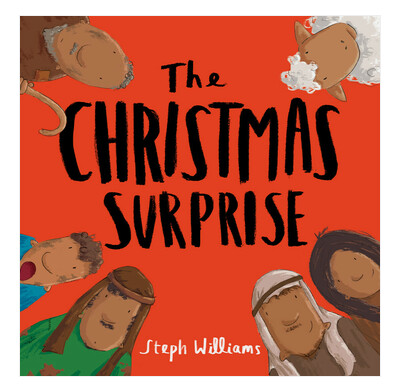A highly commercialised celebration, Christmas has well and truly shifted from the stable in Bethlehem.
The cultural Christmas narrative tells a secular story void of Christ. Family, food, excitement and giving are all good gifts from God, but for most, the name Jesus means nothing on December 25.
For us who love Jesus and recognise him as Lord, there can still be a real struggle to keep him central to celebrations.
While it is easy to criticise the absence of Christ in others’ Christmas celebrations, it can be equally easy to shift our gaze off Christ as we prepare for and celebrate Christmas ourselves. Instead of biblical realities anchoring our Christmas celebrations, they become an optional add-on that weakly fade into the background.
If we desire to have our Saviour at the centre of Christmas celebrations—and we also want our children to think of Jesus first at Christmas—we need to be intentional.
It requires an effort to keep the truth of the Saviour story rather than the secular story at the heart of Christmas. Here are three practical considerations to intentionally surround our families with the truth of the birth of the promised Saviour.
Instead of biblical realities anchoring our Christmas celebrations, they become an optional add-on that weakly fade into the background.
1. Remember the Saviour Story
We need to go back to the Bible. By rereading the Gospel accounts, we can be refreshed by the humility of Jesus’ birth, a king born in a stable. As we read, we remember Jesus’ birth is part of a greater plan. Scripture tells us the Saviour-story began long before Jesus’ birth, having its genesis in the garden of Eden.
Throughout the Old Testament, we see God’s plan for salvation promised, revealed, and fulfilled. When God promises Eve that her offspring will crush the serpent’s head, he is talking about Jesus! (Gen 3:15)
In seeing the big story, Jesus is revealed as the Saviour and promised King (Isa 9:2); the rescuer from David’s line (Isa 11:1); the victorious one over Satan (Col 2:15); the one who will return and take us to be with himself (1 Thess 4:16-17).
We can be humbled, overjoyed and excited by God’s amazing plan and share this joy with our children. They are never too young to know the whole of God’s big plan in all its glorious fullness. In fact, we should never separate Jesus’ birth from God’s plan for salvation. How special it is to be able to teach them the unfolding of God’s plan through Scripture: a promised Saviour, sent to bear the weight of our sin, purchasing us for eternal life.
2. Repeat the Saviour Story
If shopping centres can play carols for weeks on end, surely we can use the build-up to Christmas Day to repeat the Christmas story!
If shopping centres can play carols for weeks on end, surely, we can use the build-up to Christmas Day to repeat the Christmas story!
We can grab the different children’s bibles from the shelves and read the accounts with our children. We can also read the text straight from our bibles—don’t underestimate children’s ability to understand biblical language, especially if we explain it to them as they hear it. Read it together in its entirety or read snippets each night.
There are many biblically faithful retellings of the Christmas story written specifically for little ones. These allow families to intentionally interact with bible truths, placing Jesus’ birth at the centre of Christmas while using illustrations and language that grabs their attention.
One such book is The Christmas Surprise by Steph Williams. As part of the “Little Me Big God” series, it uses simple language to place Jesus’ birth within God’s big story—Jesus, a promise for a broken world. The text invites kids to join in through repetitive language; the fun illustrations highlight the amazement we should feel of a saviour king born as a helpless baby. The last pages end with the Luke 1:26-35 text, as well as a note for grownups. This is helpful for unpacking the story—especially for those still learning about God’s big biblical story.

The Christmas Surprise
Steph Williams
This simple and biblically-faithful little book will teach toddlers all about the first Christmas. Fun illustrations will engage young children as they listen to God’s word.
Activity books are another way to repeat biblical truths in an engaging way. Seek and Find is a colourful board book following the narrative of Jesus’ birth. Each page spread has part of the story complete with the bible reference—as well as verses that show us Old Testament promises fulfilled. There are many opportunities to talk about the events and promises of the first Christmas as children find and count the likes of stars, donkeys, goats and gifts.
3. Rejoice in the Saviour Story
We want our Saviour’s truths to sink deep into our children’s hearts. The angels rejoiced with the good news of great joy—and we should likewise rejoice (Lk 2:10). Christians families should embrace the excitement and have fun rejoicing at Christmas. Being intentionally creative in our talk and play around the Christmas story can bring our families great joy as well as create many happy memories centred on Jesus.
Why not take the tradition of an advent calendar and combine it with biblical truth and a bit of practical creativity? When my own boys were little, their Nana made an advent calendar with activities based on Jesus’ birth and God’s promises. It included making crowns for a King and stars for the tree; baking biscuits to share the good news with a neighbour; writing the names of Jesus on paper chains; creating homemade stable scenes; and making Christmas storybooks.
The list is endless for us to make our own traditions based around the Saviour story. Our family always decorated the tree together, but first we assembled the nativity set. Carefully we wrapped up baby Jesus and placed him under the tree as the first gift to be unwrapped on Christmas morning.
Whatever you decide to do, the intent is joyful play that enables natural conversation about Jesus. The activities give extra space for us to talk about God’s plan to bring Jesus to a broken world, to seek and save the lost.
As we intentionally connect Christmas to biblical truths, we help our children see Jesus as the reason for true celebration. Our hope is they will fall in love not just with the Saviour story, but with the Saviour himself.













